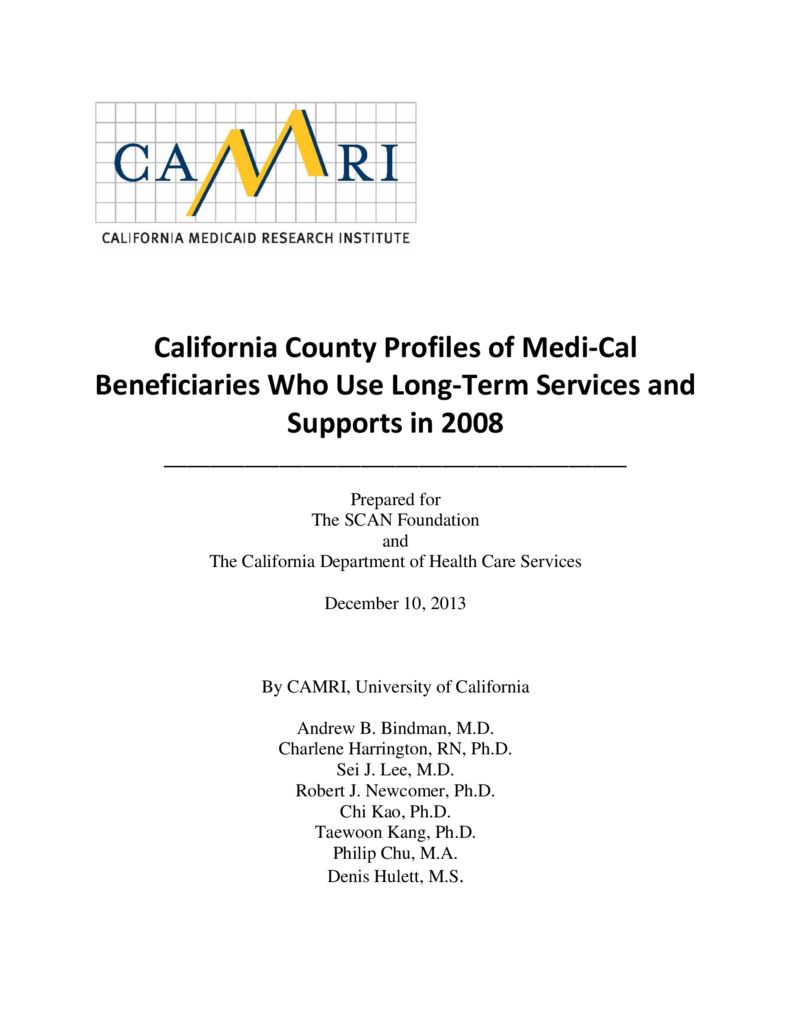CAMRI: California County Profiles of Medi-Cal Beneficiaries Who Used LTSS in 2008
summary
Following on previous reports describing the population who uses Medi-Cal-funded long-term services and supports, the California Medicaid Research Institute has produced a report that describes key characteristics of the population using LTSS across each of the state’s 58 counties. This report describes spending and service use patterns across the 58 counties.
Date Updated: 01/22/2014Introduction
Medicaid is the single largest payer for long-term services and supports (LTSS) for low-income seniors and certain individuals with disabilities in the United States. It constitutes the only safety
net coverage of comprehensive LTSS in the nation. Medicaid is jointly financed by federal and state governments. Within broad federal guidelines, each state designs and administers its own
Medicaid program. California’s Medicaid program, Medi-Cal, is administered by the California Department of Health Care Services (DHCS)…
Download the publication for all visuals and complete references.
Continue Reading
This is the third report coming from the California Medicaid Research Institute (CAMRI) project entitled: Comprehensive Analysis of Home- and Community-Based Services in California. The report describes Medicare and Medi-Cal spending for those beneficiaries using long-term services and supports funded by Medi-Cal.
The California Medicaid Research Institute (CAMRI) developed an integrated and longitudinal database containing Medi-Cal and Medicare claims and assessment data of LTSS recipients in California in 2008. CAMRI’s integrated database provides a unique opportunity to look at characteristics and program spending across the entire care continuum for beneficiaries with LTSS needs within Medi-Cal and for dual eligibles across Medicare and Medi-Cal. This report focuses on LTSS use and spending in the eight duals demonstration counties.
In this paper, the National Committee for Quality Assurance (NCQA) discusses prior integration efforts; introduces a model for integrated entities and a framework for assessing and promoting quality of integrated care; and explores the challenges to implementing and achieving the goals of person-centered, integrated care for Medicare-Medicaid beneficiaries. They use the word “framework” to describe the key concepts underlying the structure and process measures; it can also be expanded to include the content of performance measures as companions to the structure and process measures.


